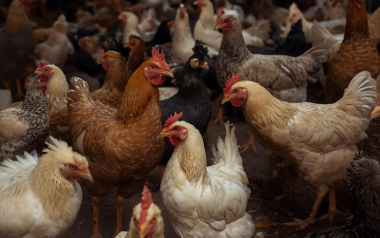Sources: Available upon request.
28 Feb 2024
Ostrich industry overview
Ostriches are the world's largest bird and products such as meat, eggs and feathers are obtained from them. These animals have become a profitable and sustainable source for various industries.
The ostrich industry has been growing steadily over the last decades worldwide.
Ostriches are the world’s largest bird and products such as meat, eggs and feathers are obtained from them. Ostrich farming has had an impact on the world economy, as these animals have become a profitable and sustainable source for various industries.
Ostrich meat production
- Ostrich meat has a distinctive flavor and texture and represents a healthy alternative to traditional red meats. With a lower fat and cholesterol content than beef, pork or lamb, ostrich meat is a lean and nutritious source of protein.
- Raising ostriches for meat production is more efficient in terms of resources and space compared to other livestock industries, as these animals adapt well to different climates and living conditions, and their rapid growth and reproduction allows them to reach market weight in approximately 12-14 months. In addition, these birds are less prone to diseases and parasites, which reduces health care costs and associated risks.
Ostrich egg production
Ostrich eggs are highly valued in the food market and in the world of handicrafts.
In the kitchen
- A single ostrich egg can weigh between 1 and 2 kilograms which is equivalent to the amount of egg in 24 chicken eggs.
- Although ostrich eggs are not as common in the kitchen as chicken eggs, they are prized for their flavor and versatility.
In handicrafts
- Ostrich eggshells are widely used in the creation of handicrafts and decorative objects.
- These shells are incredibly strong and, once emptied and cleaned, can be transformed into elegant pieces of art, lamps or even jewelry boxes.
Ostrich feather production
- Ostrich feathers are valued for their beauty and versatility.
- In the fashion industry, they are used in the manufacture of costumes, accessories, and hats.
- They are also used in the manufacture of fans, cleaning supplies and interior decoration.
- The production of ostrich feathers is a sustainable process that does not require sacrificing the animal, as they are collected during the bird’s natural molting process, which allows for a constant source of feathers without harming the animal.
Global Overview and Sustainability
The ostrich industry is sustainable and efficient, as it has better resource consumption and a lower carbon footprint compared to other livestock industries, making it a more environmentally friendly option. In addition, these birds thrive in a variety of climates and terrains, so they do not require as much land as other farm animals, reducing pressure on natural resources.
Currently, there is an increasing global demand for sustainable food and products, and this represents a great opportunity for the ostrich industry to consolidate itself as an attractive alternative to meet this trend. This is why research and support programs are underway to improve the efficiency and profitability of this growing industry in many countries.
A key problem facing ostrich farming is the lack of consumer awareness and acceptance in some regions. The solution is to educate people about the benefits of ostrich products and promote their inclusion in sustainable diets and lifestyles through government and private company advertising campaigns.
Conclusions
- Ostrich farming is a profitable and sustainable source of meat, eggs and feathers.
- As the demand for environmentally friendly and nutritious products increases, ostrich farming is a viable option to respond to these global trends.
- It has great potential for growth in the coming years.
- Government support, more research and better consumer education are needed for the ostrich industry to become an important pillar in the production of sustainable food and products worldwide.








































